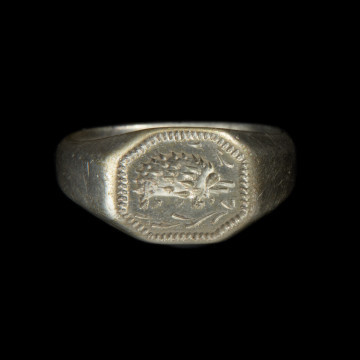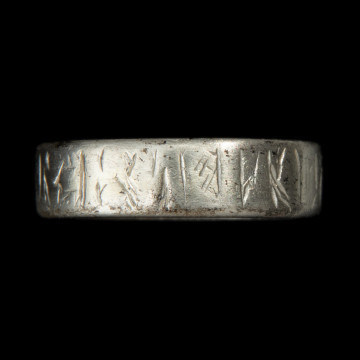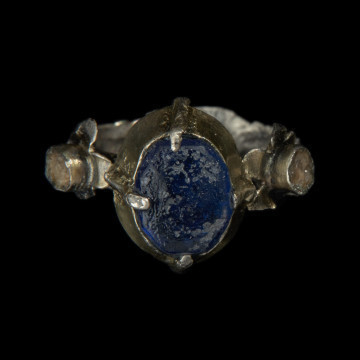
Signet ring with hedgehog
przełom XIV i XV wieku
National Museum in Szczecin
Part of the collection: Jewels and costumes of Pomeranian dukes
The presented rosette, one of a pair of almost identical Mannerist gems found in the crypt of the Castle Church in Szczecin, belonged, as determined from a posthumous portrait, to Pomeranian Duke Philip II. The Duke, who in 1606 took over the Szczecin principality from his father Bogislaw XIII, was one of the most interesting characters among the rulers of the Griffin dynasty. Famed for his piety and modesty, comprehensively educated, he was a lover and collector of art. His idea was to create a kunstkamera, i.e., a cabinet of curiosities, at the Castle in Szczecin. The Duke's cooperation with Philip Hainhofer (1578-1647), an Augsburg collector and art dealer resulted in creating the Pomeranian Cabinet - one of the greatest works of the European Renaissance. Made in Augsburg, this elaborate piece of furniture from ebony wood, decorated with silver and precious stones, contained many hiding places and drawers inside. The paintings and statues that decorated it and the objects that furnished it formed a symbolic representation of the world and human knowledge and activity.Hainhofer's contacts also led to other goldsmiths commissioning works from Augsburg, such as silver plaques with scenes from the Passion from the Lencker workshop and the expansion of the princely portrait gallery and painting collection. Philip II's collecting activities culminated in constructing a new wing to house and organised his collection. The artistic and natural history collections were to occupy the top floor, with a library planned for the floor below and an armoury on the ground floor. The Duke did not live to see the project completion, he died in 1618, and the construction of the new wing of the Castle was only completed three years later, during the reign of his brother Francis I.
Monika Frankowska-Makała
Author / creator
Dimensions
cały obiekt: height: 1,9 cm, width: 4,2 cm
Object type
headgear adornment, jewellery
Creation time / dating
Creation / finding place
Identification number
Location / status

przełom XIV i XV wieku
National Museum in Szczecin

przełom XIV i XV wieku
National Museum in Szczecin

National Museum in Szczecin
DISCOVER this TOPIC
National Museum in Lublin
DISCOVER this PATH
Educational path